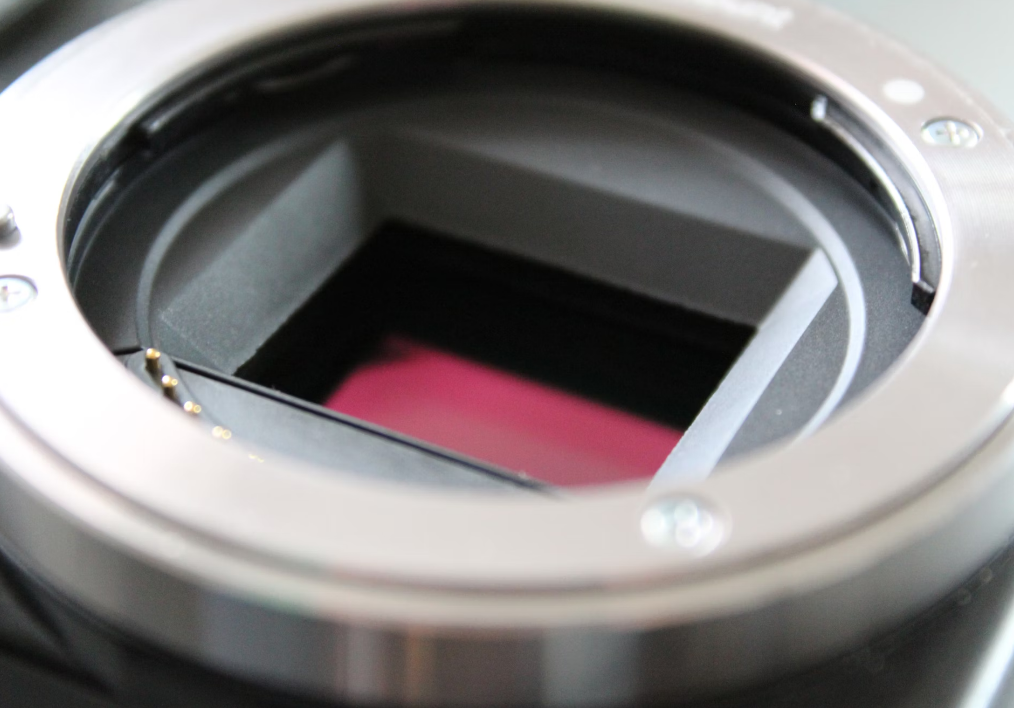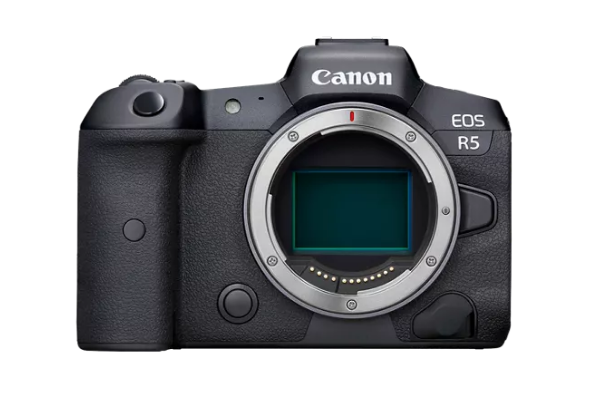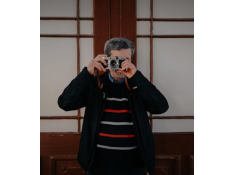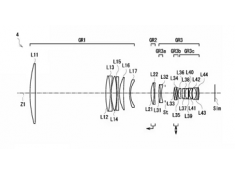How many different kinds of cameras are there in the world?
Monday 30 September 2024
 873
873
 Reproduction without the author's authorization is prohibited
Reproduction without the author's authorization is prohibited
Cameras are typically classified by various factors, including the type of sensor they use and the image format they produce. Understanding these classifications can help photographers make informed decisions based on their shooting needs, style, and budget. Below, we’ll break down cameras based on their sensor technology and image formats.
Classified by Sensor (Photosensitive Element)
The sensor is the heart of the camera, capturing light and converting it into an image. Different types of sensors offer varying levels of image quality, sensitivity, and performance in different environments.
CMOS

CMOS (Complementary Metal-Oxide-Semiconductor) sensors are the most commonly used in modern digital cameras. They offer several advantages, including lower power consumption, faster processing, and high performance in low-light situations. CMOS sensors also allow for on-chip functionality, such as faster autofocus and image stabilization, making them ideal for most photographers.
CCD
CCD (Charge-Coupled Device) sensors were once the standard in digital cameras but are less common today. They provide superior image quality with less noise, especially in low-light conditions. However, CCD sensors consume more power and are slower than CMOS, making them more suitable for specialized photography, like scientific imaging or high-end applications where image quality is the primary concern.
Film
Though not a digital sensor, film is still highly regarded by many photographers for its distinct visual characteristics. Film cameras use photosensitive chemical layers to capture light, producing images with a unique texture and color depth. Film is classified by format, such as 35mm, medium format, or large format, each offering different levels of image resolution and detail. While digital sensors have largely replaced film, it remains popular in fine art and enthusiast circles.
I have introduced in my previous blog which are the best 35mm film cameras:10 Best Point And Shoot Film Camera In 2024
Classified by Image Format
The size of the image format, or sensor size, significantly impacts image quality, depth of field, and how the camera performs in different shooting scenarios. Larger formats capture more detail but are often more expensive and bulkier, while smaller formats are lighter and more affordable.
Full Frame

Full-frame cameras use a sensor the same size as a traditional 35mm film frame (36x24mm). These sensors offer excellent image quality, low-light performance, and a shallow depth of field, making them ideal for professional photographers. Full-frame sensors are found in many high-end DSLRs and mirrorless cameras, and they provide superior detail and dynamic range compared to smaller sensors.
I have introduced in my previous blog which are the best Full Frame cameras:The Best Full-Frame Mirrorless Cameras for 2024
APS-C
APS-C sensors are smaller than full-frame sensors but still offer good image quality. They are often used in entry-level and mid-range cameras. Due to the smaller sensor size, APS-C cameras have a crop factor, which makes them popular for wildlife and sports photography where the crop factor effectively extends the focal length of lenses. APS-C sensors are also more affordable and compact, making them a solid choice for hobbyists and travel photographers.
Micro Four-Thirds
Micro Four-Thirds (MFT) is a popular camera system and sensor format, developed by Olympus and Panasonic, known for offering a balance between image quality, portability, and versatility. The sensor size in a Micro Four-Thirds camera is smaller than APS-C and full-frame sensors, measuring 17.3mm x 13mm, which makes these cameras more compact while still delivering excellent image quality.
1-Inch Sensors
Cameras with 1-inch sensors are commonly found in advanced compact cameras and some bridge cameras. The sensor size is typically 13.2mm x 8.8mm, which is larger than standard compact camera sensors but smaller than APS-C. Cameras with 1-inch sensors are highly portable and offer a significant improvement in image quality over traditional compact cameras, making them a popular choice for travel and video enthusiasts.
Compact Camera Sensors
Standard compact cameras often use even smaller sensors, typically around 1/2.3-inch (6.17mm x 4.55mm) in size. These cameras prioritize portability and convenience, making them great for point-and-shoot photography. However, the smaller sensor results in lower image quality, especially in low-light conditions, and less control over depth of field. Compact cameras are widely used for casual photography or by travelers who prioritize convenience over advanced image quality.
Medium Format
Medium format cameras have sensors larger than full-frame but smaller than large format. These cameras offer exceptional detail, dynamic range, and image quality, making them the preferred choice for high-end commercial photography, fashion, and fine art. Medium format systems are bulkier and more expensive but provide unparalleled resolution, making them ideal for large-scale prints and highly detailed work.
Large Format
Large format cameras use much larger image sensors or film sheets, offering extreme levels of detail and depth. Large format photography is mostly used in architectural, landscape, and studio photography, where precision and detail are critical. Due to the size and complexity of these systems, they are typically used by professionals and specialists. Large format cameras offer unrivaled image quality but are slower to operate and require more expertise.
Classify by Use
Cameras can also be classified by their primary function or intended use. Each type of camera is designed with specific features tailored to different environments, tasks, and requirements. Below are some common types of cameras based on their usage.
Photography Camera
Photography cameras are specifically designed for capturing still images. These cameras come in various forms, from professional-grade DSLRs and mirrorless systems to compact point-and-shoot models. They offer high image resolution, manual controls, and often come with interchangeable lenses for different shooting scenarios. Whether for landscapes, portraits, or wildlife, photography cameras are optimized for producing high-quality still images in various lighting conditions.
Movie Camera

Movie cameras, also known as video cameras, are built to record continuous moving images. While many photography cameras have video recording capabilities, movie cameras are specifically designed for filming. They provide higher frame rates, enhanced audio capture, and smooth focusing during movement. These cameras are used in everything from professional filmmaking to vlogging. Some high-end movie cameras can record in 4K or even 8K resolution and are equipped with advanced image stabilization to ensure smooth footage.
Surveillance Camera
Surveillance cameras are used primarily for security purposes. They are typically placed in strategic locations to monitor and record activities over a long period. These cameras come in various forms, including IP cameras, CCTV systems, and smart security cameras with Wi-Fi capabilities. They are designed for durability and often feature night vision, motion detection, and remote monitoring through apps or computer systems. Surveillance cameras are crucial in maintaining security in homes, businesses, and public spaces.
I introduced it in my previous blog: 10 Ways To Block Neighbors Security Camera
Action Camera
An action camera is a compact, rugged, and versatile device designed to capture high-quality video and photos in extreme conditions. Typically used for adventure sports, travel, and outdoor activities, action cameras are built to withstand rough environments, including water, dust, and impacts. They are lightweight and often come with waterproof housings, making them ideal for activities like surfing, skiing, cycling, and hiking.
Classified by Framing Method
Cameras can also be classified based on the framing method they use, which determines how photographers see and compose their images. The main types of cameras based on framing methods include DSLRs, SLRs, mirrorless cameras, and rangefinder cameras. Each system has its own unique way of allowing you to view and capture a scene, affecting both the user experience and image composition.
DSLR (Digital Single-Lens Reflex Camera)
A DSLR uses a reflex mirror mechanism that reflects light coming through the lens into an optical viewfinder. When you press the shutter button, the mirror flips up, and light hits the camera’s digital sensor, capturing the image. This optical viewfinder allows photographers to see the exact scene as it is through the lens, without any digital processing or lag.
I have introduced in my previous blog which are the Best dslr cameras for beginners For 2024.
SLR (Single-Lens Reflex Camera)
An SLR is the film counterpart to a DSLR and operates using the same reflex mirror system to direct light to an optical viewfinder. Unlike a DSLR, which uses a digital sensor, SLRs use film to capture images. The viewfinder shows the scene through the lens in real time, providing the photographer with an accurate framing of the shot.
Mirrorless Camera
A mirrorless camera eliminates the mirror and optical viewfinder mechanism found in DSLRs and SLRs. Instead, light passes directly through the lens to the digital sensor, and the photographer views the scene through an electronic viewfinder (EVF) or the camera’s LCD screen. This allows for a more compact, lightweight design while offering modern features like fast autofocus, 4K video recording, and advanced digital previews.
Rangefinder Camera
Rangefinder cameras have a distinct framing system where the viewfinder is separate from the lens. The photographer views the scene through a small optical viewfinder that is offset from the lens, and a rangefinder mechanism helps with manual focusing by aligning two images together. This system is commonly found in some older film cameras and certain high-end digital models.
Statement: all contents and remarks made by K&F CONCEPT 's intranet friends only represent themselves and do not reflect any K&F CONCEPT 's opinions and views.
-
 Panasonic LUMIX new camera may be equipped with electronic NDWednesday 23 April 2025
Panasonic LUMIX new camera may be equipped with electronic NDWednesday 23 April 2025 -
 Top 10 Photographers Alive Today and Why They MatterTuesday 22 April 2025
Top 10 Photographers Alive Today and Why They MatterTuesday 22 April 2025 -
 Why Every Photographer Needs the Cleaning ClothFriday 18 April 2025
Why Every Photographer Needs the Cleaning ClothFriday 18 April 2025 -
 Sony's new patent application: covering 800mm F5.6 and 400mmF4Thursday 17 April 2025
Sony's new patent application: covering 800mm F5.6 and 400mmF4Thursday 17 April 2025 -
 Sony 50-150mm f/2.0 GM lens leaked imageTuesday 15 April 2025
Sony 50-150mm f/2.0 GM lens leaked imageTuesday 15 April 2025








